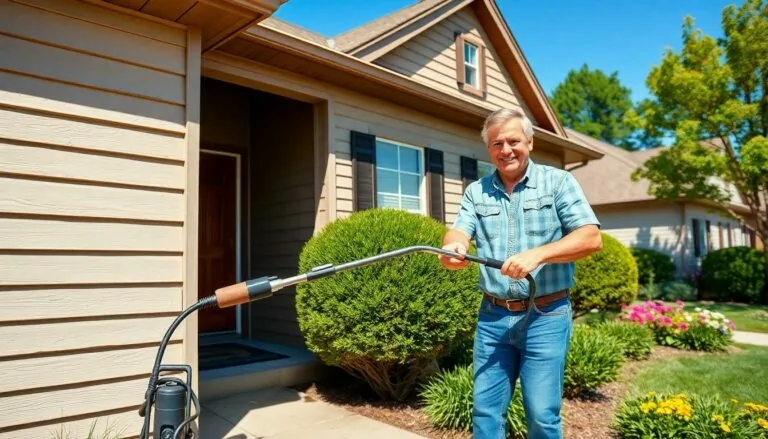Owning a log home is like living in a cozy slice of nature, but let’s face it—those charming wooden walls come with their own set of responsibilities. Just like a pet rock needs a little love (and maybe a dusting), log homes crave attention too. Understanding log home maintenance costs isn’t just a smart move; it’s essential for keeping your rustic retreat in tip-top shape.
Table of Contents
ToggleUnderstanding Log Home Maintenance Cost
Log home maintenance costs can vary significantly based on several factors. Homeowners face expenses related to sealing, staining, and regular inspections. Professional services often range from $1,000 to $5,000 annually, depending on home size and condition. Materials for maintenance, such as stains and sealants, typically add between $300 and $1,200 per project.
Preparing for ongoing upkeep requires anticipating specific needs. Each season presents opportunities for assessments. For instance, spring inspections can identify issues stemming from winter weather. Fall maintenance may focus on preparing the home for colder months, ensuring proper sealing and insulation.
Homeowners may choose DIY methods, reducing labor costs. While this can save money, thorough knowledge of log home characteristics is essential. If inexperienced, mistakes may lead to higher costs in the long run. Hiring professionals with expertise guarantees correct application of treatments.
Regular maintenance enhances longevity and boosts property value. Log homes generally last longer with proper care. Neglecting maintenance results in deterioration, leading to extensive repairs. Budgeting for unexpected repairs also remains crucial, as costs can escalate quickly.
Including energy efficiency measures can reduce long-term expenses. Proper insulation and sealing lead to lower heating and cooling bills. Consider investing in existing maintenance practices to enhance overall efficiency.
Planning annually for maintenance allows homeowners to budget appropriately. Understanding specific needs, seeking expert advice, and investing in quality materials contribute to effective log home maintenance strategies. By focusing on these factors, homeowners maintain the charm and integrity of their log homes while managing costs effectively.
Factors Influencing Maintenance Costs
Log home maintenance costs depend on various factors that impact overall expenses for homeowners and the upkeep of these unique structures.
Type of Wood
The choice of wood significantly affects maintenance costs. Hardwoods often require less maintenance compared to softwoods, which may be more prone to damage and rot. Different wood species also have varying lifespans, influencing the frequency of treatments needed. For instance, cedar and redwood resist decay better than pine. Homeowners who select higher-quality wood tend to invest less in repairs over time. Therefore, the initial choice in wood impacts long-term maintenance budgets.
Geographic Location
Geographic location plays a critical role in determining maintenance costs. Areas with harsh weather conditions typically increase wear and tear on log homes. Regions that experience high humidity or heavy snowfall may necessitate more frequent inspections and treatments to protect against mold or structural damage. Additionally, local pest populations can create further maintenance needs. Homeowners must factor in environmental elements particular to their location for accurate budgeting.
Home Size and Design
Home size and design contribute significantly to maintenance expenses. Larger homes generally require more materials for sealing and staining, which increases costs. Complex designs with intricate features may also demand specialized maintenance services and higher labor costs. Additionally, multi-level homes often need extra attention for accessibility during inspections and repairs. As design complexity increases, so does the potential for expenses, making these considerations important when assessing overall maintenance budgets.
Common Maintenance Tasks and Their Costs
Log homes require attention to maintain their unique appeal and structural integrity. Familiarity with common maintenance tasks and their associated costs enables homeowners to plan effectively.
Regular Inspections
Regular inspections play a key role in log home maintenance. Experts recommend conducting these checks at least once a year, ideally in spring or early fall. The cost for a professional inspection typically ranges from $200 to $500. A thorough inspection identifies issues like water damage, mold, and pest infestations early. Addressing these problems immediately helps prevent more significant repairs down the road, while also preserving the home’s charm.
Staining and Sealing
Staining and sealing enhance a log home’s appearance and protect it from the elements. Homeowners generally allocate between $1,500 and $3,000 for these services, depending on the size and condition of the home. Proper application of stain and sealant prolongs wood life by preventing moisture intrusion and UV damage. Reapplication is usually necessary every five to seven years, ensuring lasting beauty and structural integrity.
Pest Control
Pest control remains essential for log homes, as wood can attract various insects. Homeowners often spend between $300 and $1,000 annually on pest prevention. Regular inspections and treatments effectively combat threats like termites and carpenter ants. Preventive measures include using borate treatments and regular maintenance checks, which minimize potential infestations and associated repair costs.
Budgeting for Log Home Maintenance
Budgeting for log home maintenance involves understanding regular expenses. Homeowners can help ensure their homes remain in top shape by planning for various maintenance tasks.
Creating a Maintenance Schedule
Creating a maintenance schedule helps homeowners stay on track. Regular inspections, ideally done every year, reveal potential issues like water damage or pests. Staining and sealing require attention every five to seven years, typically costing between $1,500 and $3,000. Seasonal maintenance checks in spring and fall also support long-term preservation by addressing winter damage and preparing the home for colder months. Keeping a detailed calendar of these tasks fosters timely interventions, significantly reducing the risk of costly repairs.
Setting Aside a Contingency Fund
Setting aside a contingency fund provides financial security for unexpected expenses. Homeowners should allocate around 10-15% of their budget for emergencies. This fund can cover unforeseen repairs, such as extensive damage from pests or extreme weather. Maintaining this financial cushion supports effective management of potential high costs, ensuring the home’s long-term integrity remains intact. With this proactive approach, homeowners can confidently manage log home upkeep without facing financial strain.
Maintaining a log home is a rewarding endeavor that offers both charm and comfort. By understanding the associated costs and planning accordingly homeowners can ensure their properties remain beautiful and structurally sound. Regular inspections and timely maintenance not only prevent costly repairs but also enhance the home’s value over time.
Being proactive in budgeting and scheduling maintenance tasks is crucial. With the right approach homeowners can enjoy their log homes while safeguarding their investment. Embracing this responsibility leads to a lasting connection with nature and a well-preserved living space.





